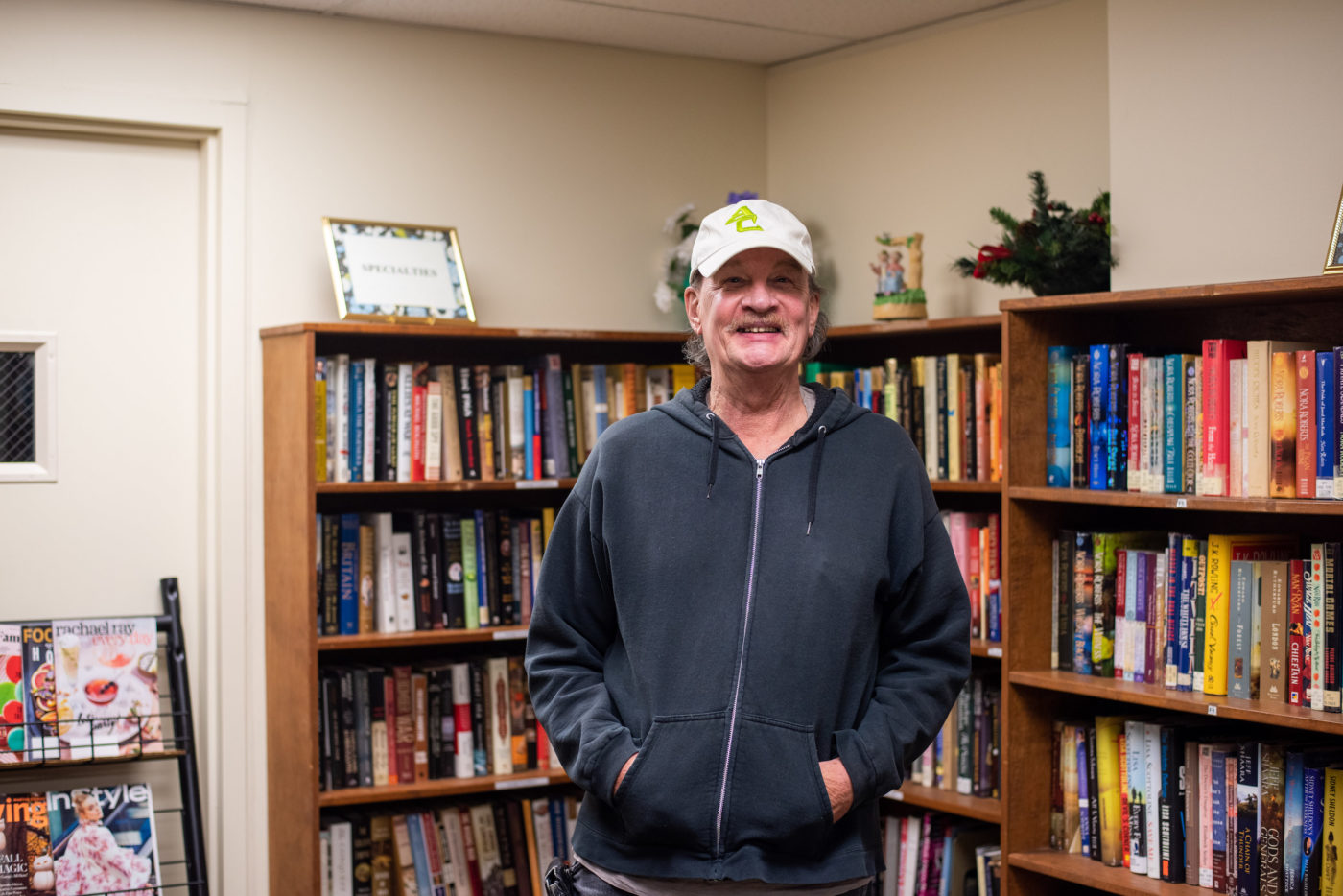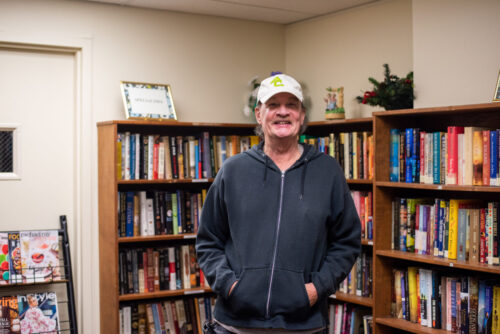Winter has never been Tim Wichman’s favorite time of year.
But for two years, the season’s below freezing temperatures and measurable snowfall proved more than just a nuisance for Tim. He was homeless at the time, and the harsh Michigan winters made merely surviving especially difficult.
But this winter is different. Thanks to Lighthouse of Michigan, a United Way for Southeastern Michigan funded partner, the 61-year-old has permanent housing and no longer minds the snow.
“It’s nice when you can relax and look out at it falling without worrying,” Tim says from his apartment in Troy. “It’s peaceful. I didn’t have peace for a long time.”
United Way grant funding supports Lighthouse’s direct services like food, shelter and clothing, as well as programs to help people become financially stable and self-sufficient.

Tim Wichman used to be chronically homeless. Thanks to United Way and our partner Lighthouse of Michigan, he is now in stable housing and improving his life.
Addressing housing in our community
In our region, 44 percent of households struggle to make ends meet. And the problem is growing, leading individuals and families to face impossible choices between necessities like food, health care and utility bills.
United Way works to eliminate this problem and ensure people can meet their basic needs. Housing-related problems — including rent, utility costs and homelessness — are one of the top issues we hear from callers to our 2-1-1 helpline and through our nonprofit partners.
Every day, United Way’s 2-1-1 helpline provides referrals to assistance programs in Wayne, Oakland, Macomb, Washtenaw and Lapeer counties. The service is available 24 hours a day, seven days a week — including weekends and holidays.
Of the 190,252 referrals our 2-1-1 operators made from July 2018 through June 2019, about 30 percent were for housing assistance. In the first quarter of this year, we made approximately 4,000 referrals to community shelters like those operated by Lighthouse.
According to 2-1-1 Call Center Supervisor Tasha Ball, the acute need for housing can also be a starting point for connecting to other resources.
“We want to connect people to as many resources as possible, because we know if you’re homeless, you may also need food or a change of clothes,” Tasha said. “We have a statewide database of more than 30,000 programs willing to help meet their needs.”

United Way’s 2-1-1 call center operators take calls 24 hours a day, seven days a week from people in need. One of the top needs we hear from callers is housing assistance.
A national problem
According to United Way’s ALICE Report, housing is one of the top expenses for families across the country. The cost of median rent in the United States is just under $1,000. For some families, this costs more than 50 percent of their income. A mortgage can account for as much as 80 percent.
As of January 2018, an estimated 8,351 people in Michigan were homeless on any given day, according to a report by Continuums of Care. Of those, 861 were people like Tim, experiencing chronic homelessness.
“More and more, we’re hearing about the lack of affordable housing impacting our region,” said Katherine Fuller, Health and Basic Needs manager at United Way for Southeastern Michigan. “Even in meetings with partners whose core function is in another area, like food or health care, housing also comes up as a primary area of concern for their clients.”
This year, our basic needs grants used the ALICE Report — which stands for Asset Limited, Income Constrained and Employed — to reframe what it looks like to survive and thrive in the region. The strategic investment process focused on expanding the safety net and identifying organizations that have the capability to create the most impact.
“We have a robust collection of safety net and social service providers in Southeastern Michigan,” Katherine said. “We are committed to building true partnerships with the network of organizations we invest in.
“Together, we can attain our vision of stability and health for individuals, families and children in our region.”
Maximizing resources
Lighthouse has been a United Way funded partner since 2012. This year, we awarded the organization $200,000 in grants to fund its emergency services programs. This includes emergency shelter and housing assistance, food pantries and a yearlong follow-up care program.
Lighthouse provides tailored support to families after they secure housing. As a result, Lighthouse can ensure that more than 90 percent of the families maintain that housing long-term.
Tim participates in follow-up care and meets monthly with a Lighthouse caseworker. They work together to navigate through a variety of available resources. They also set goals for things like car repairs and debt repayment.
Jenny Poma, Lighthouse’s chief operating officer, said United Way funds play a vital role in fulfilling the organization’s mission to end poverty.
“United Way provides critical and flexible financial resources to fill funding gaps within our programs and services to strengthen the continuum of support we offer the community,” she said. “More than that, United Way provides ongoing technical support, a network of other community partners, and helps validate our agency and our work.”
They never forgot about me
Today, sitting in the lobby of his apartment building, there’s an ease about Tim that hadn’t existed on the street.
During the years he spent homeless, Tim slept in his 1999 Chevy Venture. It was a stressful life.
“Out there, you’re constantly looking over your shoulder,” he said. “Now, I can just be me.”
Work in construction and roofing left Tim with two hernias. He also struggled with anxiety. Unable to work, he lived with family members, but they were eventually evicted, leaving him with nowhere to go. He often slept in the park or in the parking lot of local stores.
“The shelters only have room for so many, so you have to call every day at 10 a.m. to see if they have any openings,” he said. “It’s a little like calling into a radio show contest. Every day, you hope it’s your lucky day, but it’s not guaranteed.”
In 2015, he began a 90-day program at Lighthouse where residents get help with looking for work and housing. Then, a full year went by before he could be placed in permanent housing.
“When I got that call, it was like winning the lottery,” he said.
“I realized they hadn’t forgotten about me.”
A wish for winter
Tim’s life today is much different than it was just a few years ago. He hopes more people will get a helping hand this winter.
“The people at Lighthouse came a long way in helping me. They didn’t just throw my papers away. They didn’t throw me away — they reached in and did a lot for me,” he said.
“I’m grateful for that.”
Donate to support United Way’s 2-1-1 helpline and help people struggling with homelessness this winter!
